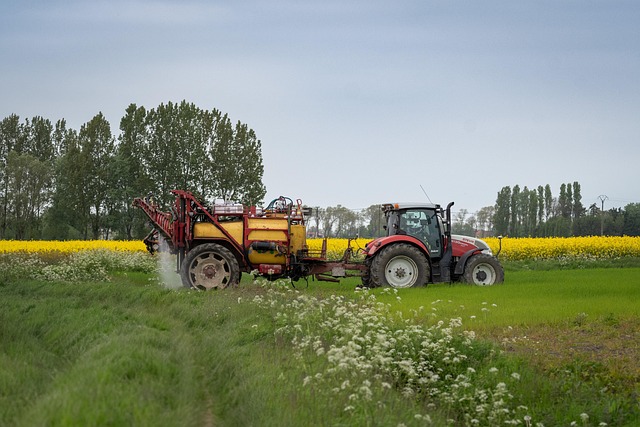Share This Article:

Trump’s Stiff Tariffs and Harsh Immigration Rules Creating Chaos for the U.S. Agriculture Industry
22 Jul, 2025 Chriss Swaney

Labor Landscape
The Trump administration’s assault on immigrants is starting to impact the American food chain as prices soar in grocery stores and more undocumented workers continue to leave the country.
In Texas, North Carolina, California and Pennsylvania, farmers who have for years depended on undocumented people for cheap labor – to plant, harvest and haul produce – have reported that workers are staying home to avoid raids by Immigration and Customs Enforcement (ICE). In Los Angeles, restaurants and food trucks have been forced to close as the immigrants who cook and wait on tables fear ICE and other law enforcement.
“Farm workers in many states are thinking about leaving the country because they are facing more obstacles to work under this anti-immigration administration,’’ said Julie Taylor of the National Farm Workers Ministry, a longstanding farm worker advocacy organization. “They are scared, there are fewer opportunities, and they are no longer prospering here. Their fear will soon be translated into the harvest, when quantities of produce are depleted,’’ she said.
Taylor was quick to point out that the work is very hard. “They have to pick 125 buckets of sweet potatoes in North Carolina just to earn $50,’’ according to Taylor.
From farm to table, at least one in five jobs in the food industry is carried out by immigrants, the equivalent of 14 million workers across the sector. This includes 27 percent agricultural workers nationwide and 33 percent of meatpackers. In restaurants, 46 percent of chefs and 31 percent of cooks were born outside the United States – mostly in Mexico, China, Guatemala and El Salvador, according to the U.S. Labor Department.
“These jobs are critical because immigrants make up a disproportionate number of essential workers, and we are going to see much higher prices for food as the crackdown continues, “ said Robert Strauss, a professor of economics and public policy at Carnegie Mellon University.
Most Americans understand this. In the run-up to last year’s elections, 75 percent of registered voters told a Pew Research poll that they believed undocumented immigrants mostly fill jobs US citizens don’t want to do.
The Pennsylvania Department of Agriculture has estimated that nearly half of Pennsylvania’s crop farm workers, roughly 30,000 people, may be undocumented immigrants, according to 2017 census numbers. The American Immigration Council, an immigration advocacy group, estimates that immigrants, both documented and undocumented, make up around 9.7 percent of the state’s total workforce, according to 2022 data, and that a large share work in the agriculture sector.
“ICE enforcement actions in agriculture are evidence of our Congress failing to do its job ..for years. Since 1986, efforts by the ag community to advance labor reform have successfully passed one chamber of Congress or the other, only to be blocked. Congress needs to be a solution to remedying this challenge instead of being the problem,’’ said Michael Marsh, president and CEO of the National Council of Agricultural Employers.
Economic experts report that the decline in the agricultural workforce is attributed to rising wages in competing industries and immigration policies impacting the H2A visa program. The shortage has been exacerbated by an aging farmer population and a decline in immigration from Mexico, forcing an increased reliance on international labor as costs rise.
According to the Pew Research Center, the total number of unauthorized immigrants in the labor force was 8.3 million in 2022, which represented just under 5 percent of the total U.S. workforce and 3 percent of the total U.S. population.
AI california case file caselaw case management case management focus claims compensability compliance compliance corner courts covid do you know the rule exclusive remedy florida glossary check Healthcare hr homeroom insurance insurers iowa kentucky leadership medical NCCI new jersey new york ohio pennsylvania roadmap Safety safety at work state info tech technology violence WDYT west virginia what do you think women's history women's history month workers' comp 101 workers' recovery Workplace Safety Workplace Violence
Read Also
About The Author
About The Author
-
Chriss Swaney
Chriss Swaney is a freelance reporter who has written for Antique Trader Magazine, Reuters, The New York Times, U.S. News & World Report, the Burlington Free Press, UPI, The Tribune-Review and the Daily Record.
More by This Author
Read More
- Nov 30, 2025
- Frank Ferreri
- Nov 29, 2025
- Frank Ferreri
- Nov 28, 2025
- Frank Ferreri
- Nov 26, 2025
- Frank Ferreri
- Nov 26, 2025
- Chriss Swaney
- Nov 25, 2025
- Liz Carey




